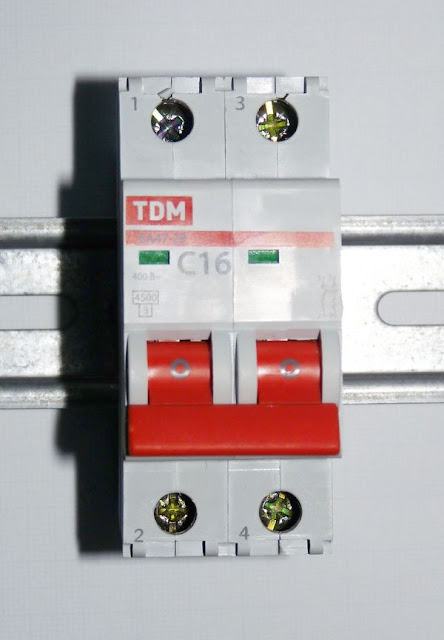Double pole circuit breaker
This week we will discuss about circuit breakers and how it goes Firstly we ask, what are double pole circuit breaker.? And we say,
Circuit breakers are the safety switches that protect all of the electrical circuits in your house. There are two types of standard breakers: single-pole and double-pole. Single-pole breakers are rated for 120 volts and 15 or 20 amps. They control standard lighting and outlet circuits, as well as some appliance circuits, in the house. The breakers themselves are relatively narrow and occupy a single slot in the home's breaker box.
Double-pole breakers typically are rated for 20 to 60 amps and supply 240-volt power to large appliances, like electric dryers and ranges. They're "double-wide" breakers that take up two slots in the breaker box and have a toggle switch that's twice the length of the toggle on single-pole breakers.
How Double-Pole Breakers Work
Inside your breaker box, or main service panel, are energized metal plates, called "hot" bus bars. Each pole, or connection point, on the bars carries 120 volts of electricity. When single-pole breakers are installed, they snap into one pole to receive 120 volts. Double-pole breakers snap onto two poles for a total of 240 volts. Circuit wiring that connects to double-pole breakers contains two "hot" wires. Each of these connects to a terminal on the breaker and is protected by half of the breaker. If a fault or other problem occurs along one of these wires, the corresponding half of the breaker will trip.
This causes the other half of the breaker to trip at the same time because the two halves are tied together by the single breaker bar or toggle. This effectively shuts off the connection to both bus poles, shutting down the entire circuit at once.
Double-Circuit Cheaters
If you open the door to your service panel and see a breaker that is single-width but has two small switch toggles, either in line or side by side, it's probably a "cheater" breaker.
Also called a tandem, slimline or twin breaker, a cheater is a double breaker that takes up the space of a single-pole breaker. Unlike a double-pole breaker, which serves a single 240-volt circuit, a cheater serves two 120-volt circuits; it cannot be used to supply 240 volts to a single circuit.
A cheater breaker isn't evidence that your electrician was cheating -- that's just a nickname -- but these breakers must be installed properly to be legal and safe. First, the panel must be designed to accept cheater breakers, and second, the cheaters must be installed in the appropriate slots. On many panels, only some of the slots are suitable for cheaters. Cheaters are often used when space in the panel is scarce and someone wants to add two 120-volt circuits, or to make space for a new 240-volt circuit elsewhere on the panel. If you want to know whether your panel can accommodate cheaters, call an electrician. By the way, modifying a cheater breaker to fit where it doesn't belong is cheating, and it's downright dangerous.




Comments
Post a Comment